
COVID-19
Comprehensive literature analysis revealed that hospitalized COVID-19 patients have a 10-30% risk of developing secondary fungal infections. Prominent infections include pulmonary aspergillosis, candidemia and mucormycosis. The single most important risk factor is receipt of systemic steroids during acute COVID-19 care.
To read more: Ezeokoli OT, et al. Risk factors for fungal co-infections in critically ill COVID-19 patients, with a focus on immunosuppressants. J. Fungi 2021. July 9. doi: 10.3390/jof
Analysis of a national registry disclosed that hospitalized individuals who were already taking a statin agent had just over 40% reduced overall COVID-19 mortality and over 25%reduction in developing a severe outcome

To read more: Daniels LB, et al. Relation of prior statin and anti-hypertensive use to severity of disease among patients hospitalized with COVID-19: Findings from the American Heart Association’s COVID-19 Cardiovascular Disease Registry. PLoS One. 2021 Jul 15;16(7):e0254635.
Drugs and Devices
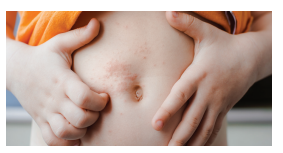
Spinosad 0.9% suspension, already FDA-approved for the management of head louse infestation, has been FDA-approved to treat scabies. A single six-hour application led to 78.1% cure at day 28, compared to a vehicle cure rate of 39.6%. This is important as reports of both ivermectin and permethrin resistant scabies have recently emerged from Europe.
To read more: Seiler JC, et al. Spinosad at 0.9% in the treatment of scabies: efficacy results from 2 multicenter, randomized, double-blind, vehicle-controlled studies. J Am Acad Dermtol 2021;August 11. doi: 10.1016/j.jaad.2021.07.074
Infectious Diseases
Dermoscopy can facilitate the diagnosis of dermal myiasis by demonstrating the insect’s breathing spiracles, bubbles, and real time larval motility.
To read more: Nassar A, et al. A dermoscopic study of cutaneous myiasis. Int J Dermatol 2021; 60:840-843

Pitted keratolysis is due to proteolytic enzymes elaborated by causative organisms (Corynebacterium species and Kytococcus sedentarius). Zinc oxide nanoparticle-coated socks can reduce the risk of developing this disorder.
To read more: Ongsri P, et al. Effectiveness and safety of zinc oxide nanoparticle-coated socks compared to uncoated socks for the prevention of pitted keratolysis: A double-blinded, randomized, controlled trial study. Int J Dermatol 2021;60:864-867 (Editor’s note: Although not precisely what the authors used in this study, I did find antibacterial metal impregnated socks–silver, copper, and/or zinc–available for sale on the internet.)
Lyme disease can include loss of proper visual-spatial capacities. This leads to faulty convergence and accommodation, spatial orientation problems, and feeling overwhelmed by movement in the peripheral visual fields. Specialty laboratories, such as Galaxy Diagnostics and IGeneX, utilize a battery of non-standard blood tests to detect Lyme and other tick-borne infections; routine lab testing misses some 40% of such diseases. Padula WV. July 16, 2021. Primary Care Optometry News.
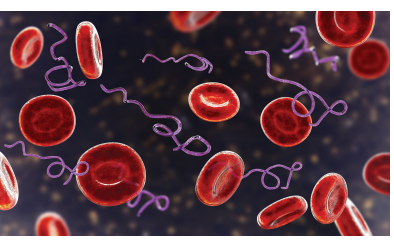
Dimethyl fumarate is used to treat relapsing-remitting multiple sclerosis. It works by altering the balance of T-cell subsets, ultimately increasing NK cells while decreasing interferon-producing CD4 and CD8 cells. However, this new ratio of T-cells often facilitates development of severe herpes zoster.
To read more: Anagnostouli MC. et al. Aggressive herpes zoster in young patients with multiple sclerosis under dimethyl fumarate: significance of CD8+ and natural killer cells. Neuroimmunol Neuroinflamm. 2021 Jul; 8(4): e1017. doi: 10.1212/NXI.0000000000001017
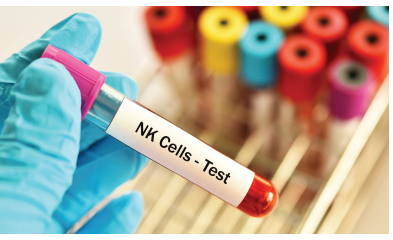
Hair and Nails
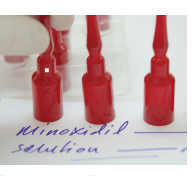
Australian investigators collected 84 cases of men who presented with androgenetic alopecia in a pattern that precisely mimicked that seen predominantly in women (Female Patterned Hair Loss). Most patients had onset in the mid-20’s and were of either European or Indian background. Low dose oral minoxidil and/or concomitant 5-α reductase inhibition (eg. Finasteride) were effective at increasing hair counts in men with FPHL.
To read more: Kerkemeyer KL, et al. Female pattern hair loss in men: a distinct clinical variant of androgenetic alopecia. J Am Acad Dermatol 2021;85:260-62
Skin of color patients often employ a variety of over-the-counter products to deal with alopecia. This summary points out that there is some evidence, based upon randomized controlled human trials, to support the use of rosemary oil. Also capsaicin appears beneficial in alopecia areata. For other commonly used agents, there is either no evidence of efficacy or only indirect, animal study evidence.
To read more: Laughter MR, et al. Commonly sed over the counter therapies for hair growth in skin of color: An evidence-based review. J Drug Dermatol 2021;20(7):726-731
Dissecting cellulitis of the scalp is typically treated with oral antibiotics, intralesional steroid injections, and oral isotretinoin. Results are often unsatisfactory. In this case report, dissecting cellulitis was successfully treated with eight injections of secukinumab over three months, remaining in remission for one
full year.
To read more: De Bedout V, et al. Treatment dissecting cellulitis of the scalp with secukinumab. J Drugs Dermatol 2021;20(7):776-777
General Dermatology
The most recent ten-year experience with calciphylaxis in a major Irish hospital is summarized. All patients were undergoing dialysis for end-stage kidney disease. Calciphylaxis risk factors included: female gender, high BMI, warfarin use, and elevated levels of parathyroid hormone and alkaline phosphatase. Prognosis was worse for proximal compared to distal lesions, with an overall one-year survival of 50% despite treatment with sodium thiosulfate.
To read more: O’Keefe C, et al. Biopsy-proven calciphylaxis in the Irish National Kidney Transplant Center, 2010-2019. Int J Dermatol 2021;60:901-903
Rheumatologic Diseases
Investigators surveyed over 1400 images of lupus erythematosus readily found in online textbooks and journals at a single center’s medical library. They found that images depicting light skin were twice as common as those depicting dark skin tones.
To read more: Rana A, et al. The representation of skin colors in images of patients with lupus erythematosus. Arthritis Care Res 2021; May 31. doi: 10.1002/acr.24712
An American retrospective review of adult hospitalized patients found that those under age 70 with polymyositis or dermatomyositis had an increased risk of cardiac arrhythmia compared to a cohort of age-matched controls. Supraventricular arrhythmia, including atrial flutter and fibrillation, were particularly prevalent.
To read more: Naaraayan A, et al. Arrhythmia prevalence among patients with polymyositis–
dermatomyositis in the United States: an observational study. Heart Rhythm 2021; May 26.
doi: 10.1016/j.hrthm.2021.05.029

Psoriasis
Halobetasol/Tazarotene Lotion proved equally efficacious for treatment of psoriasis in white, non-white, and Hispanic study patients in a subgroup ad hoc retrospective data analysis. Adverse events were similar across all racial/ethnic groups. There was no increased retinoid irritation in skin of color subjects.
To read more: Alexis AF, et al. Fixed-combination halobetasol propionate and tazarotene lotion for
psoriasis in patients with skin of color. J Drugs Dermatol 2021;20(7):735-744
Contact Dermatitis
The frequency of allergic contact dermatitis appears similar among Black and White American populations, although different patterns of exposure may explain differing frequencies of reaction to specific allergens. Paraphenylenediamine is a more frequent allergen in Black compared to White patients. Accurate reading of patch tests may be hampered by less obvious erythema in skin of color; side lighting and palpation are suggested to enhance accuracy of readings.
To read more: Scott I, et al. Update on contact dermatitis and patch testing in patients with skin
of color. Cutis 2021;108:10-12
Hidradenitis suppurativa
Results from a double-blind, placebo-controlled Phase 2 clinical trial strongly suggest that the IL-17A and IL-17F inhibitor may provide meaningful relief for those with hidradenitis suppurativa. This study included 79 subjects who completed the trial.
To read more: Glatt S, et al. Efficacy and safety of bimekizumab in moderate to severe hidradenitis suppurativa: a phase 2, double-blind, placebo-controlled randomized clinical trial. JAMA Dermatol 2021; August 18. doi: 10.1001/jamadermatol.2021.2905
Cutaneous oncology, Surgery and Lasers
A systematic literature review and meta-analysis was used to create a map showing the frequency of melanoma on the various portions of the plantar surface. This map was compared to a foot image showing the mean pressure applied to various parts during each day. This study, which included individuals from all racial and ethnic backgrounds, concluded that repeated mechanical stress is a risk factor for plantar melanoma, considering that melanoma locations correlated with high-pressure pedal regions.
To read more: Cho KK, et al. Melanomas and stress patterns on the foot: a systematic review and meta-analysis. J Am Acad Dermatol 2021;85:256-258
Cosmetic Dermatology

The use of artificial intelligence to refine and enhance outcomes in cosmetic dermatology is in its beginning. Tools already exist to help predict, and therefore choose, clinical outcome. Further research is directed at utilizing AI to direct automated energy-based treatment devices and robotic-assisted treatments.
To read more about the future: Elder A, et al. The role of artificial intelligence in cosmetic dermatology—current, upcoming, and future trends. J Cosmet Dermatol. 2021;20(1):48-52.
Acne

Despite limitations in the number, size, and methodologies of published studies, the authors felt some key generalizations were possible regarding acne in skin of color patients. Post-inflammatory hyperpigmentation can be as distressing as the acne itself. Use of non-comedogenic and ceramide-rich cleansers and moisturizers may mitigate against drying and irritation from acne treatments. Azelaic acid containing products may help clear PIH while simultaneously treating acne.
To read more: Alexis AF, et al. Racial/Ethnic variations in acne: implications for treatment and skin care recommendations for acne patients with skin of color. J Drugs Dermatol 2021;20(7):716-725
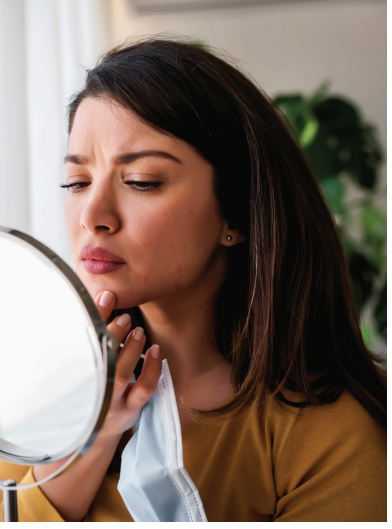
“Maskne” relates to acne precipitated by prolonged mask-wearing related to the COVID-19 pandemic. Etiologic factors include: cutaneous dysbiosis, textile-skin friction, and excessive occlusive moisture. Mask wearing may also exacerbate existing disorders, such as rosacea and perioral dermatitis. Masks composed of textiles impregnated with zinc oxide, silver nanoparticles, or copper oxide may be beneficial.
To read more: Teo WL. The “Maskne” Microbiome. Int J Dermatol 2021;60:799-809. ²

